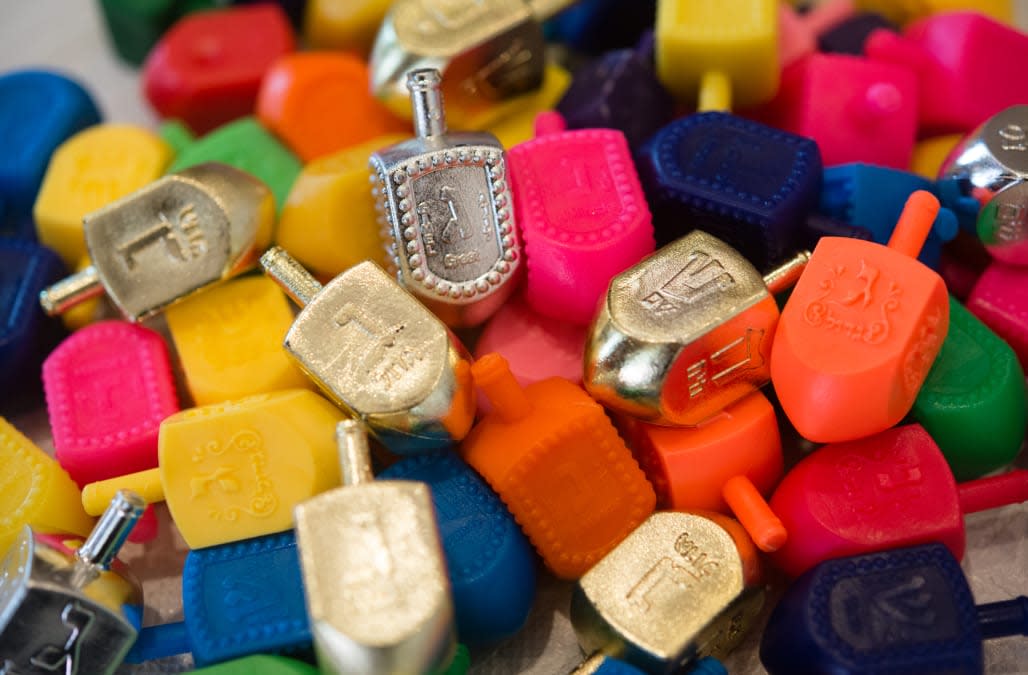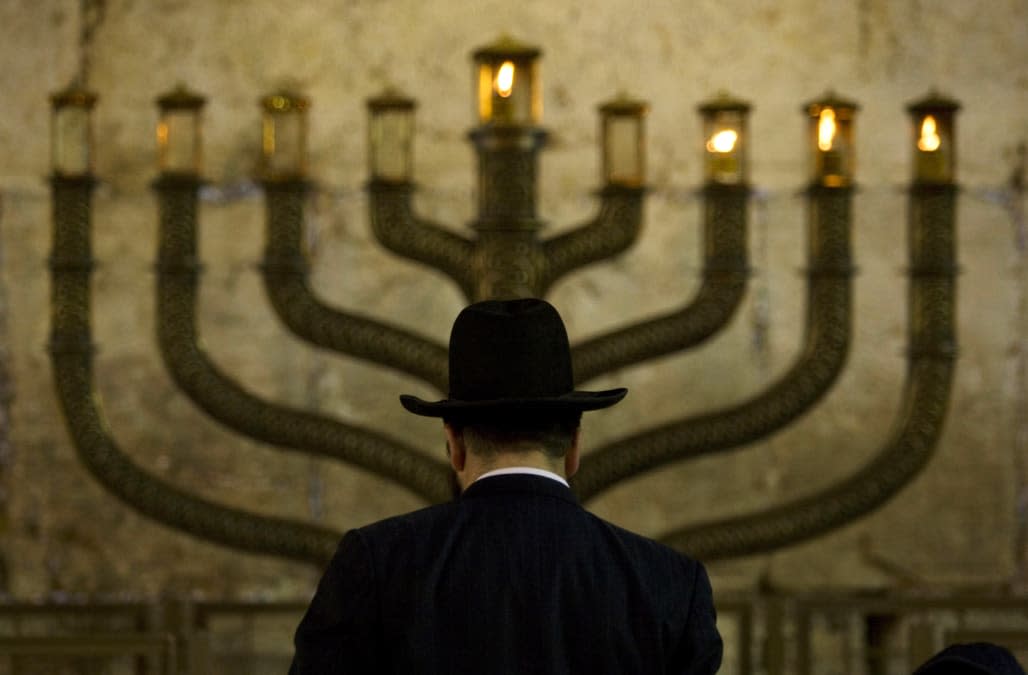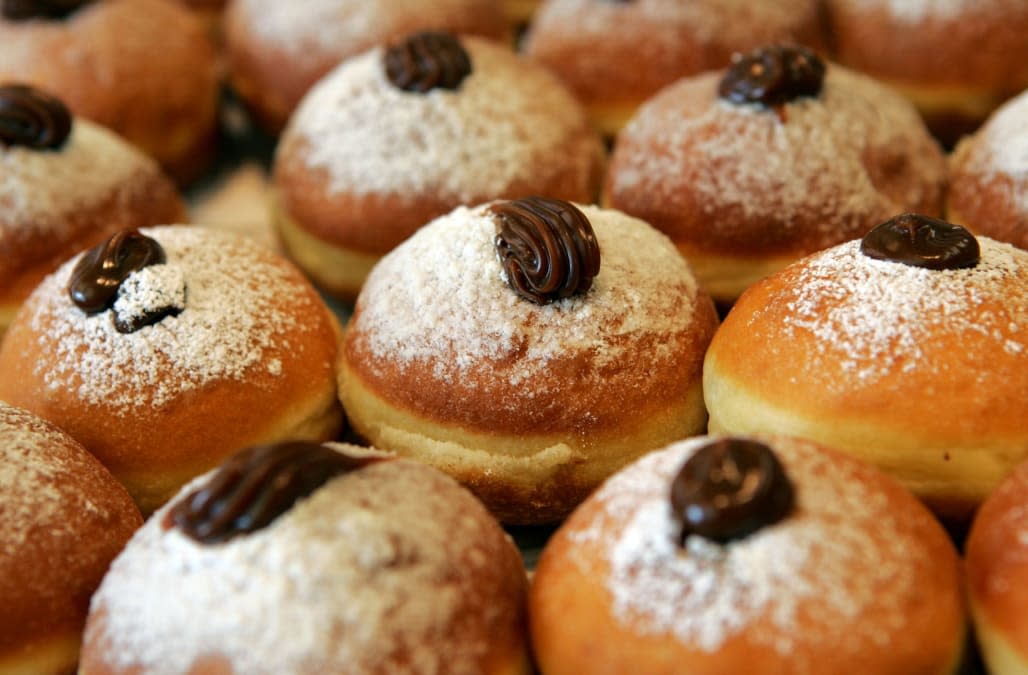8 things you (probably) didn't know about Hanukkah

Sunday marks the first day of Hanukkah, also known as the Festival of Lights. Spanning eight days, Jews light a candle on the menorah -- or hanukkiyah -- for each day of the holiday. Hanukkah celebrates the rededication of the Temple in Jerusalem after its destruction by the Syrian Greeks in 164 BCE. Although its date every year changes because it is based on the lunar calendar, the holiday usually falls between late-autumn and mid-winter months.
Even though it is not the holiest Jewish holiday, Hanukkah has become one of the most well-known ones, mainly because of its close timing with Christmas.
However, there are a lot of fun things that make this holiday shine. Check out this list for eight things you may not have known about this festive holiday!

1) Spinning the dreidel was a total cover-up. During the 2nd century B.C.E., learning Torah was outlawed in Greek-Syrian law. The crime was punishable by death. In order to escape law officials patrolling the area, Jewish children at the time hid in caves to study. If any patrolmen would pass by, the children would trick them by drawing out their dreidels and playing with them.
2) Speaking of dreidels, did you know you can play dreidel competitively? The Major Dreidel League is a bracketed NCAA-style tournament dedicated to awarding the nation's top spinners. According to its website, the organization is aimed at "reinventing the dreidel in a modern and exciting new way." As their tagline says, "No Gelt, No Glory." Even if you're not great at the game, you can still spin in style with these awesome Dr. Dreidels this season.

3) Gelt is a recent tradition. While many cannot think about Hannukkah without dreidels and dreidels without gelt -- which means "money" in Yiddish -- the chocolate coins are a relatively new addition to the holiday. Originally, people were encouraged to give children money, or "gelt," to children to encourage them to continue their Jewish studies. During the 20th century, an American chocolatier decided to make coin-shaped chocolate pieces of candy to give to children instead as a more age-appropriate gift. In fact, historians liken chocolate gelt to one of the reasons behind the big holiday's big surge in America in the 1920s.

4) Largest menorah in the world.Two places lay claim to having the world's largest menorah, and they happen to be in New York. Both Brooklyn and Manhattan have been in tough competition over whose menorahs shine the brightest. One can be seen lighting up Fifth Ave. Meanwhile, across the river, Chabad of Park Slope's menorah shines throughout Brooklyn. Both structures are 32-feet-tall -- the maximum allowed by Jewish law. Although the Manhattan menorah is actually the biggest, according to the Guinness World Records, the shamash (middle candle) of the Brooklyn menorah is actually six inches taller.
5) Wait, but is it a menorah or hanukkiyah? The two terms are used interchangeably throughout the Festival of Lights, but there is a difference. A "hanukkiyah" is a type of candelabra specifically designed to light the candles on Hanukkah. It has eight candles in a line and one candle -- called the "shamash" -- slightly out of place, which is used to light the others. A menorah is another type of candelabra with seven branches that was used in the first temple in Jerusalem. The biggest difference between the two is that the hanukkiyah is lit only during the Festival of Lights whereas the menorah is more of a symbolic figure for Judiasm.
6) It's not worth trying autocorrect. Is it Chanukah, Hannukah, Hannukkah, and Channukah? No matter how you spell it, the holiday stays the same. There is no correct spelling, unless you're spelling in Hebrew. So why does it differ so much? It all boils down to the transliteration, which is when people "change (letters, words, etc.) into corresponding characters of another alphabet or language." חֲנֻכָּה is the Hebrew spelling, but is not easily translated into English so there really is no wrong way to spell it.

7) Lighting the menorah in Israel is a lot like the Olympics. Just like athletes race long distances to light the Olympic torch, runners in Israel race a bright flame 20 miles from the Israeli city of Modin to the capital, Jerusalem. There, the chief rabbi begins the official lighting of the menorah.

8) Calories don't count on Hanukah, right? One of the best parts of any Jewish holiday is the food that comes with it, and Hanukkah is no exception. From those deliciously oil-smothered latkes to the sweet, sweet taste of chocolate gelt, there's bound to be some extra calories built into this holiday. In fact, an estimated 24 million sufganiyot, or filled donuts, are sold in Israel every Hanukkah. That's 10.8 BILLION calories!
We guess Hanukkah is the perfect time to be a baker or a candlestick maker.
Watch below to hear Adam Sandler's updated version of his famous "Hanukkah Song!"

More stories about the holidays:
How to make apple-studded fritters for Hanukkah
Jimmy Fallon shares your #WorstGiftEver tweets, and some of them are pretty awful
Mall Santa goes above and beyond to help comfort autistic boy

